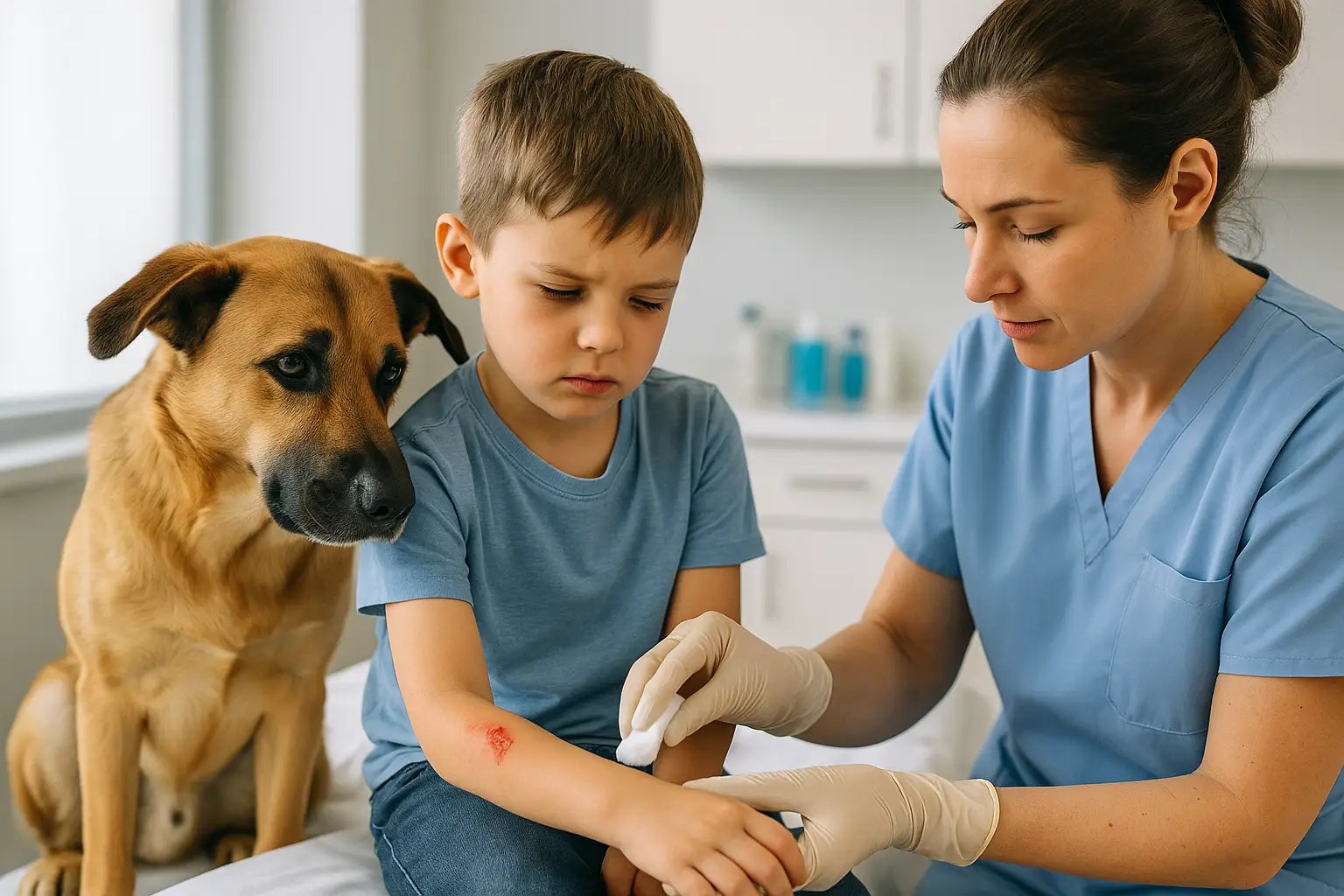When you visit urgent care after a dog bite, cut, or scrape, you’re often urged to get a tetanus shot. It’s presented as an essential precaution, almost without question.
But is that advice actually backed by science?
The truth may surprise you—and empower you to make far better decisions for yourself and your family.
Why Tetanus Shots Don’t Work for Immediate Protection
Here’s something clinics don’t often tell you: tetanus vaccines take weeks to stimulate immunity.
According to the Centers for Disease Control and Prevention (CDC) (https://www.cdc.gov/tetanus/about/faqs.html), it can take up to three weeks for your body to develop full protection after a tetanus shot.
Meaning: if you’re sitting in urgent care with a fresh wound, the shot won’t protect you in the moment. It’s a long-term preparation—not an emergency fix.
What is recommended for immediate cases?
In real high-risk wounds, medical guidelines recommend tetanus immune globulin (TIG)—an immediate-acting antibody treatment (CDC Pink Book: Tetanus Chapter) (https://www.cdc.gov/vaccines/pubs/pinkbook/tetanus.html).
Dog Bites and Tetanus: Debunking the Fear
Despite the panic, dog bites are not a major source of tetanus. Here’s why:
| Tetanus Bacteria Need: | Dog Bites Typically Are: |
|---|---|
| Anaerobic (low-oxygen) environments | Oxygenated (bleeding) wounds |
| Presence of animal manure (not saliva) | Saliva without manure contamination |
| Deep, closed puncture wounds | Open, bleeding injuries |
Tetanus bacteria (Clostridium tetani) thrive only where there is little oxygen—deep inside wounds contaminated with manure.
Dog bites, by contrast, are usually open, bleeding wounds, flooded with oxygen—which naturally kills tetanus bacteria (Johns Hopkins Medicine: Tetanus Overview) (https://www.hopkinsmedicine.org/health/conditions-and-diseases/tetanus).
The “Rusty Nail” Myth—Explained
You may have heard that stepping on a rusty nail causes tetanus.
The truth: it’s not the rust—it’s the contamination.
In the past, rusty nails were often found in barnyards, where manure bacteria were everywhere. Manure, not metal, was the real danger.
If a wound bled freely, it would naturally flush out bacteria and expose the wound to oxygen, reducing risk.
Modern urban injuries involving a clean rusty object almost never cause tetanus.
Myth vs. Fact: Quick Comparison
| Myth | Fact |
|---|---|
| Dog bites automatically require a tetanus shot. | Dog bites rarely cause tetanus because they bleed. |
| Tetanus shots instantly protect you. | Tetanus shots take weeks to stimulate immunity. |
| Rust causes tetanus. | Tetanus comes from manure bacteria, not rust. |
What’s Really In That “Tetanus Shot”?
When you’re offered a “tetanus shot,” you’re often receiving more than you realise.
Clinics typically administer a Tdap (Tetanus, Diphtheria, Pertussis) or Td (Tetanus and Diphtheria) vaccine.
The official product information from the U.S. Food and Drug Administration (FDA) (https://www.fda.gov/media/124002/download) shows these vaccines have not been evaluated for:
- Cancer-causing potential (carcinogenicity)
- DNA mutation risks (mutagenicity)
- Fertility effects
Quote: “BOOSTRIX has not been evaluated for carcinogenic or mutagenic potential, or for impairment of fertility.”
Yet urgent care clinics often push these shots without discussing the risks—or disclosing that you’re getting vaccines for multiple diseases at once.
More natural approaches to health are available at Natural Body Intelligence (https://naturalbodyintelligence.com/).
Real-World Accounts: When Knowledge Changes Outcomes
Many people, once they understand the real science, choose to decline the tetanus shot after minor injuries—and report no ill effects.
For instance, a rural mother shared how after her son was bitten by a neighbour’s dog, they declined the vaccine. Instead, they:
- Rinsed the wound thoroughly with saline
- Encouraged light bleeding
- Allowed it to heal naturally in the open air
The boy recovered perfectly, without infection or any complications.
Stories like these are echoed in natural health groups around the world, supporting the idea that oxygen and cleanliness—not vaccines—are the key to wound healing.
Conclusion: Think Twice Before You Say Yes
Next time you’re offered a “routine” tetanus shot:
- Ask about your real risk based on the wound type.
- Understand that bleeding is protective, not dangerous.
- Insist on informed consent, especially for combination shots.
- Prioritise bodily autonomy over fear-driven decisions.
Fear is not medicine.
Empower yourself with knowledge—and real science—before agreeing to any medical intervention.
For more natural approaches to immune health and self-care, explore Natural Body Intelligence (https://naturalbodyintelligence.com/).
✅ Links Used in This Article:
- CDC: Tetanus Questions and Answers (https://www.cdc.gov/tetanus/about/faqs.html)
- CDC Pink Book: Tetanus Chapter (https://www.cdc.gov/vaccines/pubs/pinkbook/tetanus.html)
- Johns Hopkins Medicine: Tetanus Overview (https://www.hopkinsmedicine.org/health/conditions-and-diseases/tetanus)
- FDA Boostrix Tdap Insert PDF (https://www.fda.gov/media/124002/download)
- Natural Body Intelligence (https://naturalbodyintelligence.com/)


